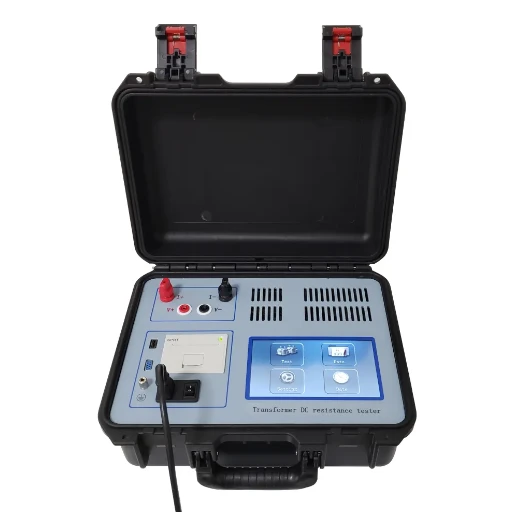TEL:
+86-0312-3189593
 English
English

Telephone:0312-3189593

Email:sales@oil-tester.com

-
 Afrikaans
Afrikaans -
 Albanian
Albanian -
 Amharic
Amharic -
 Arabic
Arabic -
 Armenian
Armenian -
 Azerbaijani
Azerbaijani -
 Basque
Basque -
 Belarusian
Belarusian -
 Bengali
Bengali -
 Bosnian
Bosnian -
 Bulgarian
Bulgarian -
 Catalan
Catalan -
 Cebuano
Cebuano -
 China
China -
 China (Taiwan)
China (Taiwan) -
 Corsican
Corsican -
 Croatian
Croatian -
 Czech
Czech -
 Danish
Danish -
 Dutch
Dutch -
 English
English -
 Esperanto
Esperanto -
 Estonian
Estonian -
 Finnish
Finnish -
 French
French -
 Frisian
Frisian -
 Galician
Galician -
 Georgian
Georgian -
 German
German -
 Greek
Greek -
 Gujarati
Gujarati -
 Haitian Creole
Haitian Creole -
 hausa
hausa -
 hawaiian
hawaiian -
 Hebrew
Hebrew -
 Hindi
Hindi -
 Miao
Miao -
 Hungarian
Hungarian -
 Icelandic
Icelandic -
 igbo
igbo -
 Indonesian
Indonesian -
 irish
irish -
 Italian
Italian -
 Japanese
Japanese -
 Javanese
Javanese -
 Kannada
Kannada -
 kazakh
kazakh -
 Khmer
Khmer -
 Rwandese
Rwandese -
 Korean
Korean -
 Kurdish
Kurdish -
 Kyrgyz
Kyrgyz -
 Lao
Lao -
 Latin
Latin -
 Latvian
Latvian -
 Lithuanian
Lithuanian -
 Luxembourgish
Luxembourgish -
 Macedonian
Macedonian -
 Malgashi
Malgashi -
 Malay
Malay -
 Malayalam
Malayalam -
 Maltese
Maltese -
 Maori
Maori -
 Marathi
Marathi -
 Mongolian
Mongolian -
 Myanmar
Myanmar -
 Nepali
Nepali -
 Norwegian
Norwegian -
 Norwegian
Norwegian -
 Occitan
Occitan -
 Pashto
Pashto -
 Persian
Persian -
 Polish
Polish -
 Portuguese
Portuguese -
 Punjabi
Punjabi -
 Romanian
Romanian -
 Russian
Russian -
 Samoan
Samoan -
 Scottish Gaelic
Scottish Gaelic -
 Serbian
Serbian -
 Sesotho
Sesotho -
 Shona
Shona -
 Sindhi
Sindhi -
 Sinhala
Sinhala -
 Slovak
Slovak -
 Slovenian
Slovenian -
 Somali
Somali -
 Spanish
Spanish -
 Sundanese
Sundanese -
 Swahili
Swahili -
 Swedish
Swedish -
 Tagalog
Tagalog -
 Tajik
Tajik -
 Tamil
Tamil -
 Tatar
Tatar -
 Telugu
Telugu -
 Thai
Thai -
 Turkish
Turkish -
 Turkmen
Turkmen -
 Ukrainian
Ukrainian -
 Urdu
Urdu -
 Uighur
Uighur -
 Uzbek
Uzbek -
 Vietnamese
Vietnamese -
 Welsh
Welsh -
 Bantu
Bantu -
 Yiddish
Yiddish -
 Yoruba
Yoruba -
 Zulu
Zulu
Feb . 20, 2025 01:22
Back to list
transformer tap changer types
The world of transformers is vast and intricate, but one component stands out due to its crucial role in voltage regulation and efficiency enhancement the transformer tap changer. With different types to consider, understanding their nuances can significantly influence the performance and reliability of the power distribution systems.
3. Electronic OLTCs These tap changers leverage solid-state electronics to achieve switching. Although less common, they are gaining traction for their fast response time and reduced mechanical complexities. They are ideal for modern smart grid applications that require rapid and dynamic responses. Off-Load Tap Changers (DETC) Unlike OLTCs, off-load tap changers require the transformer to be de-energized during tap adjustments. They are typically used for infrequent adjustments and are more commonly found in distribution transformers rather than in transmission settings. Their simplicity and cost-effectiveness make them ideal for fixed settings where voltage adjustments are neither frequent nor sudden. Choosing the Right Tap Changer Selecting the right type of tap changer depends on several critical factors - Application Determine whether continuous voltage adjustment is necessary, which would warrant the use of an OLTC. - Voltage Level Higher voltage levels often require more robust solutions like vacuum OLTCs. - Frequency of Operation Consider the need for frequent adjustments in dynamic environments, which OLTCs can accommodate more efficiently than DETCs. Conclusion The evolution of transformer tap changer types underscores their indispensable role in the modern electricity landscape. With the rise of renewable energy sources and smart grids, the demand for refined voltage regulation systems is more pronounced than ever. By understanding the specific requirements and operational environments, utility companies, engineers, and facility managers can make informed decisions that enhance system reliability and efficiency. As technology advances, so too do the solutions within the sphere of transformer tap changing, with innovations paving the way for smarter, more resilient power networks.


3. Electronic OLTCs These tap changers leverage solid-state electronics to achieve switching. Although less common, they are gaining traction for their fast response time and reduced mechanical complexities. They are ideal for modern smart grid applications that require rapid and dynamic responses. Off-Load Tap Changers (DETC) Unlike OLTCs, off-load tap changers require the transformer to be de-energized during tap adjustments. They are typically used for infrequent adjustments and are more commonly found in distribution transformers rather than in transmission settings. Their simplicity and cost-effectiveness make them ideal for fixed settings where voltage adjustments are neither frequent nor sudden. Choosing the Right Tap Changer Selecting the right type of tap changer depends on several critical factors - Application Determine whether continuous voltage adjustment is necessary, which would warrant the use of an OLTC. - Voltage Level Higher voltage levels often require more robust solutions like vacuum OLTCs. - Frequency of Operation Consider the need for frequent adjustments in dynamic environments, which OLTCs can accommodate more efficiently than DETCs. Conclusion The evolution of transformer tap changer types underscores their indispensable role in the modern electricity landscape. With the rise of renewable energy sources and smart grids, the demand for refined voltage regulation systems is more pronounced than ever. By understanding the specific requirements and operational environments, utility companies, engineers, and facility managers can make informed decisions that enhance system reliability and efficiency. As technology advances, so too do the solutions within the sphere of transformer tap changing, with innovations paving the way for smarter, more resilient power networks.
Previous:
Latest news
-
Testing Equipment Industry Sees Major Advancements in 2025: Smart & Precision Technologies Lead the WayNewsJun.06,2025
-
Applications of Direct Current Generators in Renewable Energy SystemsNewsJun.05,2025
-
Hipot Tester Calibration and Accuracy GuidelinesNewsJun.05,2025
-
Digital Circuit Breaker Analyzer Features and BenefitsNewsJun.05,2025
-
Benefits of Real-Time Power Quality Monitoring Devices for Industrial EfficiencyNewsJun.05,2025
-
Earth Fault Loop Testing in High-Rise Building Electrical SystemsNewsJun.05,2025



